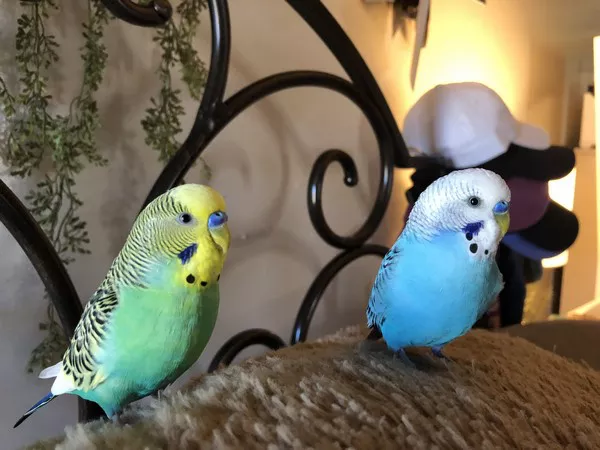Box turtles make fascinating and endearing pets, but ensuring their well-being requires more than just a comfortable enclosure. To provide optimal care for these unique reptiles, understanding their habitat requirements is crucial. From temperature and substrate to dietary needs and enrichment, this article explores the essential elements that contribute to a thriving environment for box turtles.
1. Enclosure Size and Design
The first step in creating an ideal habitat for box turtles is to provide an adequately sized enclosure. A general rule of thumb is to allow at least 10 square feet of space for every adult box turtle. This allows them to move around freely, explore their surroundings, and exhibit natural behaviors.
The enclosure should be escape-proof, with walls that are at least 12 inches high, as box turtles are known for their climbing abilities. A secure lid is also necessary to protect them from potential predators and to prevent escapes.
To mimic their natural habitat, incorporate hiding spots and shelters in the form of plants, logs, or turtle hides. This provides a sense of security and promotes mental well-being for box turtles.
2. Temperature and Lighting
Maintaining the right temperature is vital for the health of box turtles. Provide a basking area with a temperature between 85-90°F (29-32°C) using a heat lamp. The rest of the enclosure should have a gradient ranging from 70-80°F (21-27°C) during the day and not dropping below 60°F (15°C) at night.
Full-spectrum UVB lighting is essential for box turtles, as it aids in the synthesis of vitamin D3, necessary for calcium metabolism. Ensure that the lighting setup covers the entire enclosure and is replaced regularly, as UVB output diminishes over time.
3. Substrate Selection
Choosing an appropriate substrate is crucial for maintaining proper humidity levels and facilitating natural behaviors. Cypress mulch, coconut coir, or a mixture of both work well as substrates, providing a comfortable and moisture-retaining environment.
Spot cleaning the substrate regularly is essential, and a deep clean of the entire enclosure should be conducted periodically to prevent the buildup of harmful bacteria. Maintaining the right humidity level, typically between 60-80%, is vital for box turtles to stay hydrated and maintain healthy skin and shell conditions.
4. Diet and Nutrition
A well-balanced and varied diet is crucial for the health of box turtles. Their diet should consist of a mix of dark, leafy greens, vegetables, fruits, and high-quality commercial turtle pellets. Calcium and phosphorus supplements are also essential to maintain proper shell health.
It’s important to research and understand the specific dietary needs of the box turtle species you are caring for, as different species may have variations in their nutritional requirements. Avoid overfeeding and monitor their weight regularly to prevent obesity, a common issue in captive box turtles.
5. Hydration and Water Requirements
Box turtles require access to fresh, clean water at all times. Provide a shallow water dish for drinking and soaking. The depth of the water should allow the turtle to immerse itself comfortably while preventing the risk of drowning.
Soaking in water helps box turtles stay hydrated, aids in shedding, and promotes healthy urination. Ensure that the water dish is cleaned regularly to prevent the growth of harmful bacteria.
See Also:How Long Do Hawaiian Sea Turtles Live?
6. Enrichment and Mental Stimulation
Box turtles are intelligent creatures that benefit from mental stimulation and enrichment. Provide a variety of items, such as rocks, logs, and branches, for them to climb on and explore. Additionally, hiding spots and tunnels encourage natural behaviors and provide a sense of security.
Rotate and rearrange the enrichment items regularly to keep the environment dynamic and prevent boredom. Puzzle feeders and foraging activities can also stimulate their minds and encourage natural hunting behaviors.
7. Veterinary Care and Regular Check-ups
Regular veterinary check-ups are crucial for monitoring the health of your box turtle. Find a veterinarian experienced in reptile care who can perform routine examinations, check for signs of illness, and offer guidance on proper nutrition and habitat maintenance.
Maintain a record of your turtle’s behavior, eating habits, and any changes in appearance. Any sudden changes in behavior, lethargy, or abnormalities should be promptly addressed by a qualified reptile veterinarian.
Conclusion
Creating the perfect habitat for box turtles involves careful consideration of their unique needs. From the size and design of the enclosure to temperature, lighting, and dietary requirements, each element plays a crucial role in ensuring the well-being of these captivating reptiles. By providing a habitat that mirrors their natural environment and attending to their physical and mental needs, you can enjoy the companionship of a healthy and happy box turtle for many years to come.
Related Topics:
How Long Do Box Turtles Live as Pets?
How Long Do Small Turtles Live as Pets?
What Do Miniature Turtles Really Eat?
























